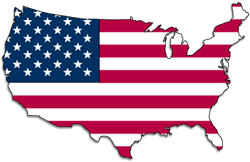U.S. private fleets report productivity spike, aging drivers
 KING CITY, ON – Private fleets in the U.S. appear to be in an enviable position. Productivity is up, driver turnover is low, and a growing number of operations are investing in safety-related tools. But initial results from the National Private Truck Council’s annual benchmarking survey also show there are still challenges to overcome, particularly when it comes to an aging driver population.
KING CITY, ON – Private fleets in the U.S. appear to be in an enviable position. Productivity is up, driver turnover is low, and a growing number of operations are investing in safety-related tools. But initial results from the National Private Truck Council’s annual benchmarking survey also show there are still challenges to overcome, particularly when it comes to an aging driver population.
“They’re doing more economically, efficiently,” said senior vice president Tom Moore, when releasing preliminary results of the 100-fleet survey during the Private Motor Truck Council of Canada’s annual meeting.
Compared to the previous year, private fleets south of the border recorded 6% more shipments, 12% more volume, 18% more value, and 5% more kilometers in 2015. Empty miles have dropped to 20% compared to the 30% in 2009. Some of the space is even being filled with for-hire freight. About 60% of the private operations have retained for-hire operating authorities.
Private fleets just have to be careful not to chase that freight at the expense of their core business, Moore said.
Driver turnover, meanwhile, hovers around 17%. Most of those who do leave (45%), head for other driving jobs. “The grass is greener on the other side of the fence,” Moore said. As for the 30% who leave for discipline issues, they’re probably drivers who shouldn’t have been recruited in the first place, he added.
The chance to work close to home is clearly an attraction for many private fleet employees. About 45% are home every night, and 20% are limited to overnight trips.
The average private fleet driver is making US $64,138, with the top performers making closer to US $80,000. But the wages will likely rise, as the driver shortage continues to expand. “Drivers are going to be like the free agents in football or baseball,” Moore predicted.
Benefits are added on top of that. More fleets have introduced driver referral programs, and 84% are paying incentives. Another 85% of the surveyed fleets have driver wellness programs of some sort, with smoking cessation (84%), nutritional counseling (79%) and weight management programs (79%) topping the list.
“Private fleets in the United States have never been in a better position,” Moore said.
There are signs of even better days ahead. Low oil prices, combined with security concerns, could attract more manufacturing operations back to the U.S., in a trend known as nearshoring, said Gary Petty, the council’s president and CEO. The trucks that serve them could “touch” products eight to 12 times, as they move everything from raw materials to finished products.
But the council predicts a different fate for another industry segment. “We see basically a sunset in the Over the Road owner-operator as a business model,” said Petty.
Increasing automation such as platooning could also see driving jobs shift to a greater focus on customer service roles, he added.
Still, the average driver working for the surveyed private fleets has reached 51. Even as older drivers retire, the average age of those who remain continues to climb, Moore said. One surveyed company had two drivers over 75, “humping freight, 35 stops a week.”
Hiring standards have also dipped in face of the demand for new employees. This was the first year in a decade that the minimum hiring age dropped, now down to 21.9 years, while minimum experience has also dipped to 2.03 years.
The drivers are not the only things that are aging. The trucks are getting older, too. Surveyed private fleets, other than those that lease equipment, are trading in Class 8 trucks at an average of seven years and 1.18 million kilometers. “We are operating a pretty old fleet,” Moore admitted, referring to underlying factors such as corporate restrictions on capital equipment purchases.
Other challenges come in the form of a changing retail landscape.
“Internet shopping is huge compared to physical stores,” Petty said. Just over half of all U.S. purchases are now online, and Amazon accounts for 60% of those. Some local deliveries are also being made by non-traditional drivers under an Amazon Flex program, in what he refers to as the Uberization of freight. It isn’t the only change Amazon has in mind. In February, it filed a patent application for a system that would install 3D printers on trucks, processing and manufacturing goods while they are on the way to a buyer.
When it comes to the top productivity-related issues, safety topped the ranking. “If you’re not safe, you’re not going to be efficient,” Moore said, adding that fleet utilization and routing, combined with increased technology, round out the Top 3.
Surveyed private fleets are increasingly adopting active safety technology, with 52% using at least some disc brakes, 50% automatic transmissions, 38% Electronic Stability Controls, and 28% in-cab cameras.
While the U.S. will soon mandate Electronic Logging Devices, Moore cautions against the flood of suppliers entering the market. “Buyer beware. Make sure you’re doing business with the right people out there,” he said.
The survey included 100 private fleets, with an average of 350 power units each, and 1.25 drivers per power unit.
Have your say
This is a moderated forum. Comments will no longer be published unless they are accompanied by a first and last name and a verifiable email address. (Today's Trucking will not publish or share the email address.) Profane language and content deemed to be libelous, racist, or threatening in nature will not be published under any circumstances.